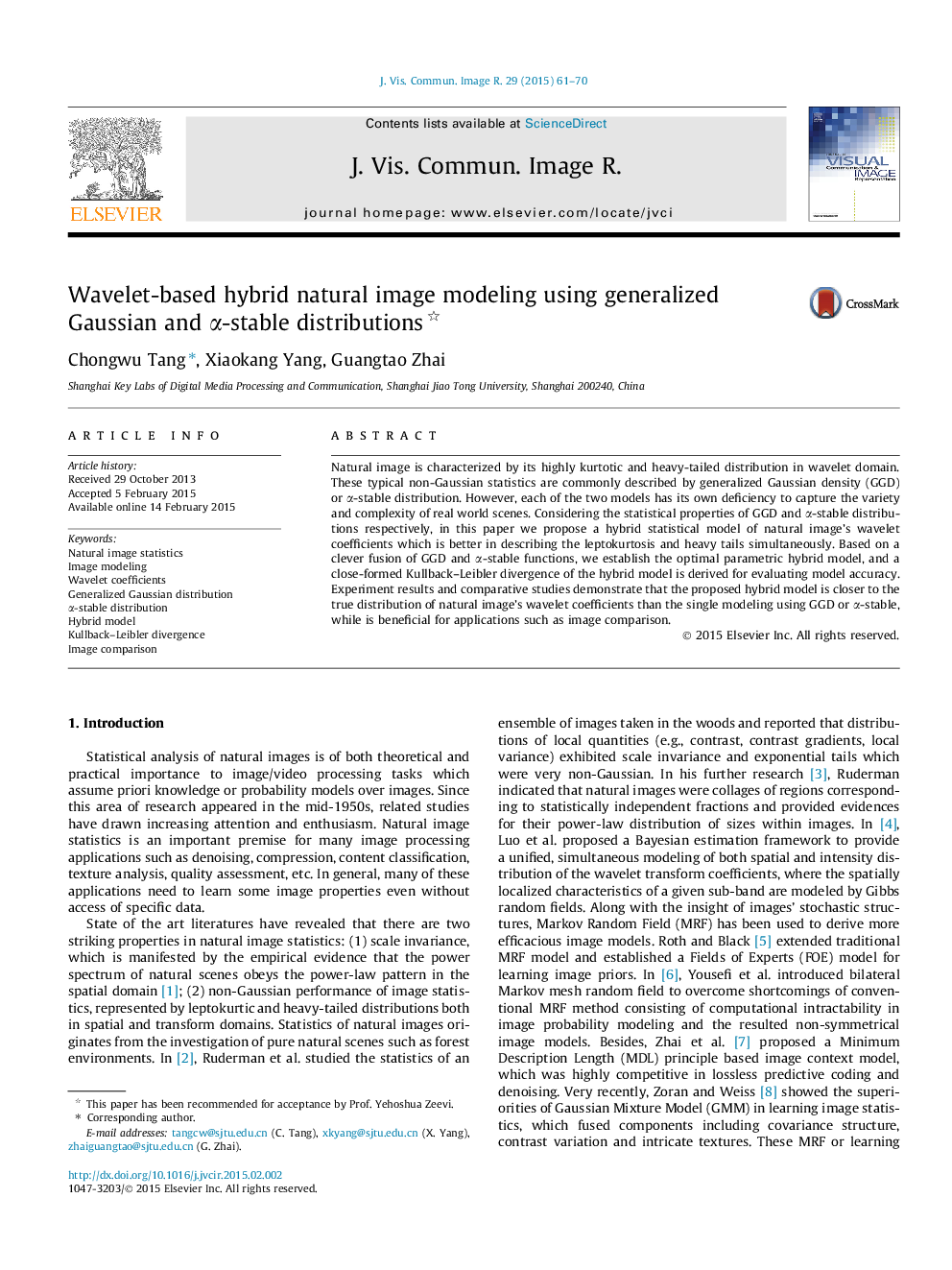| Article ID | Journal | Published Year | Pages | File Type |
|---|---|---|---|---|
| 529207 | Journal of Visual Communication and Image Representation | 2015 | 10 Pages |
•Natural image presents leptokurtic and heavy-tailed distribution in wavelet domain.•GGD or stable modeling cannot capture the non-Gaussian properties simultaneously.•A hybrid model can take the superiorities of GGD and stable densities into account.•A smart fusion of GGD and stable is given based on a weighted optimization problem.•A closed form of KLD is devised for model performance evaluation and application.
Natural image is characterized by its highly kurtotic and heavy-tailed distribution in wavelet domain. These typical non-Gaussian statistics are commonly described by generalized Gaussian density (GGD) or α-stable distribution. However, each of the two models has its own deficiency to capture the variety and complexity of real world scenes. Considering the statistical properties of GGD and α-stable distributions respectively, in this paper we propose a hybrid statistical model of natural image’s wavelet coefficients which is better in describing the leptokurtosis and heavy tails simultaneously. Based on a clever fusion of GGD and α-stable functions, we establish the optimal parametric hybrid model, and a close-formed Kullback–Leibler divergence of the hybrid model is derived for evaluating model accuracy. Experiment results and comparative studies demonstrate that the proposed hybrid model is closer to the true distribution of natural image’s wavelet coefficients than the single modeling using GGD or α-stable, while is beneficial for applications such as image comparison.
